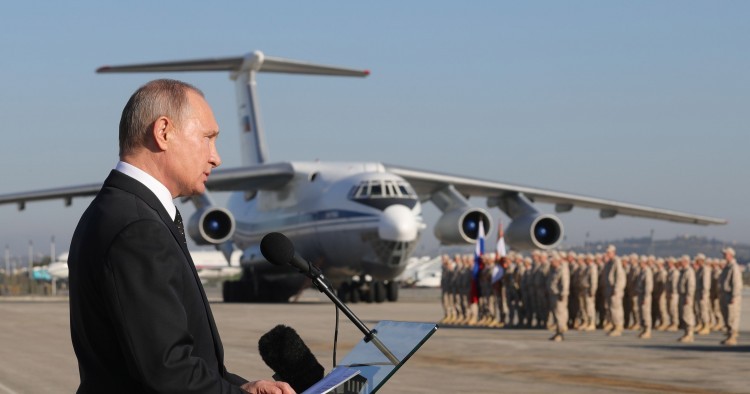On May 29, 2020 President Vladimir Putin ordered Russia’s Defense and Foreign ministries to hold talks with Damascus over the issue of “transferring additional real estate and [adjacent] water areas” to Russia.
Protocol №1 — the document that Moscow and Damascus should be discussing — is supposed to be an annex to the Russia-Syria agreement on the deployment of Russian air forces in Syria that Moscow and Damascus signed on Aug. 26, 2015. The agreement was amended on Jan. 18, 2017 to have Syria, among other things, lease out the Hemeimeem air base, including real estate on its territory, to Russia for 49 years with an option to automatically extend the agreement for another 25 years unless one party informs the other via diplomatic channels at least one year in advance of its willingness to terminate the deal.
The Kremlin would be unlikely to publish Putin’s decree if the new deal had not been agreed upon. This means the new protocol between Moscow and Damascus will likely be signed sometime soon.
Moscow has been considering extending both Russian military bases in Syria — the Hemeimeem air base and what is still nominally called the “logistics support facility of the Russian navy” in Tartus — for a long while. Hemeimeem has been regularly shelled by rebel and terrorist forces operating in Syria and works to improve its security were made public in fall 2019. Modernizing the facility in Tartus may be an even more ambitious project. It needs a serious overhaul to turn it into a bona fide naval base that could host any type of ship, including carriers.
While the text of the protocol has not been made public yet, its contents would allow us to draw conclusions about the scale of Russia’s plans for extending its access to the eastern Mediterranean. For now though, it is unclear whether Moscow merely seeks to rent additional adjacent areas to improve its security systems or whether it is planning to develop comprehensive military infrastructure that would enable it to stockpile arms, ammunition, fuel, and other materiel. This would give Moscow the ability to increase the number of troops deployed if and when it needed to. In addition, a missile-equipped military facility would strengthen Russia’s position in the eastern Mediterranean and increase its leverage over one of the “chokepoints” of the Middle East — the Suez Canal.
While Russia is currently struggling with the consequences of COVID-19 at home, its foreign policy projections suggest it is also bracing itself for the post-pandemic world.
Maxim Suchkov is non-resident scholar at MEI, a senior fellow and associate professor at the Moscow State Institute of International Relations (MGIMO-University), a non-resident expert at the Russian International Affairs Council (RIAC), and an associate research fellow at the Italian Institute of International Political Studies (ISPI). The views expressed in this piece are his own.
Photo by Mikhail Klimentyev\TASS via Getty Images
The Middle East Institute (MEI) is an independent, non-partisan, non-for-profit, educational organization. It does not engage in advocacy and its scholars’ opinions are their own. MEI welcomes financial donations, but retains sole editorial control over its work and its publications reflect only the authors’ views. For a listing of MEI donors, please click here.













